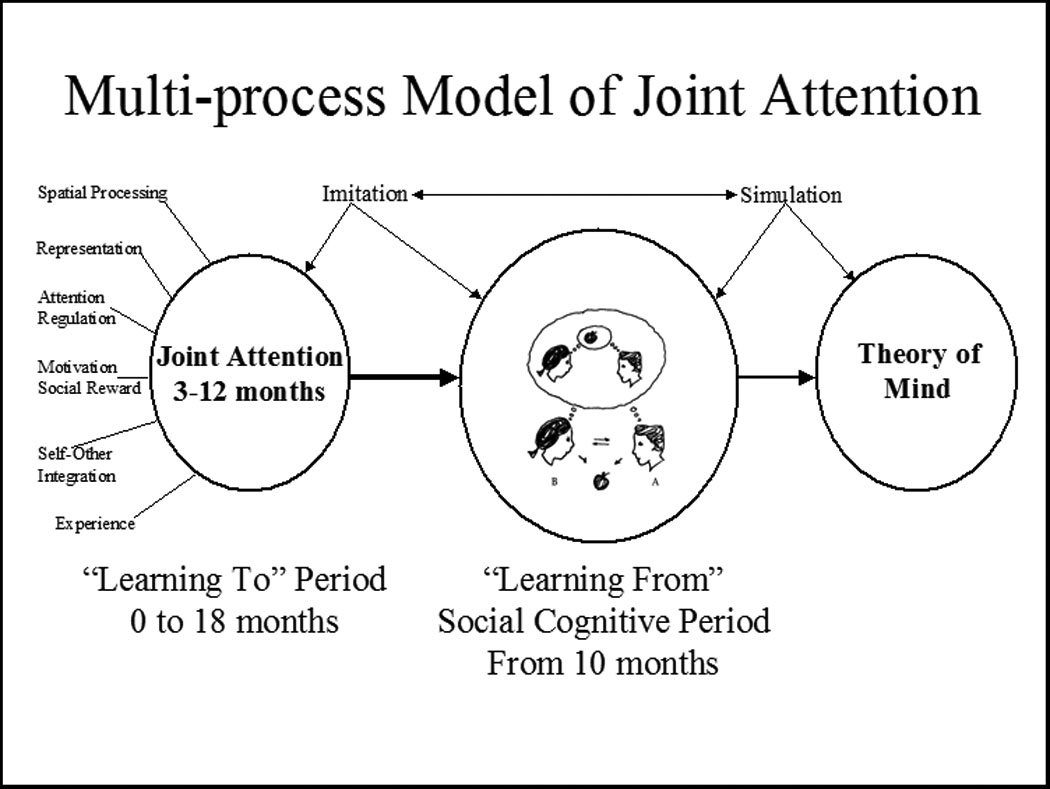Figure 7.

In the first year the development of joint attention involves the “learning to” integration of executive, motivation and imitation processes to support the routine, rapid and efficient (error free) execution of patterns of behavior that enable infants to coordination processing of overt aspects of visual self attention with processing of the social attention of other people. In the latter part of the first year and the second year infants can better monitor their own experiences and integrate it with information about the social partners during joint attention events. This provides a critical multi-modality source of information to the infants about the convergence and divergence of self and others experience and behavior during sharing information in social interactions. Theoretically, this provides the stage for the “learning from” phase of joint attention development. In this stage infants can control their attention to self organize and optimize information processing in social learning opportunities. The integration of anterior and posterior self-other attention processing (Fig. 5) provides a neural network that enriches encoding in social learning. The internalization of the overt joint processing of attention to the covert joint processing of attention to representations is part of an executive system that facilitates symbolic development and the social cognition. Indeed both symbolic thought and social cognition may be characterized by a transition from learning to socially coordinate overt attention to the capacity to socially coordinate covert mental representations of the attention of self and others.
